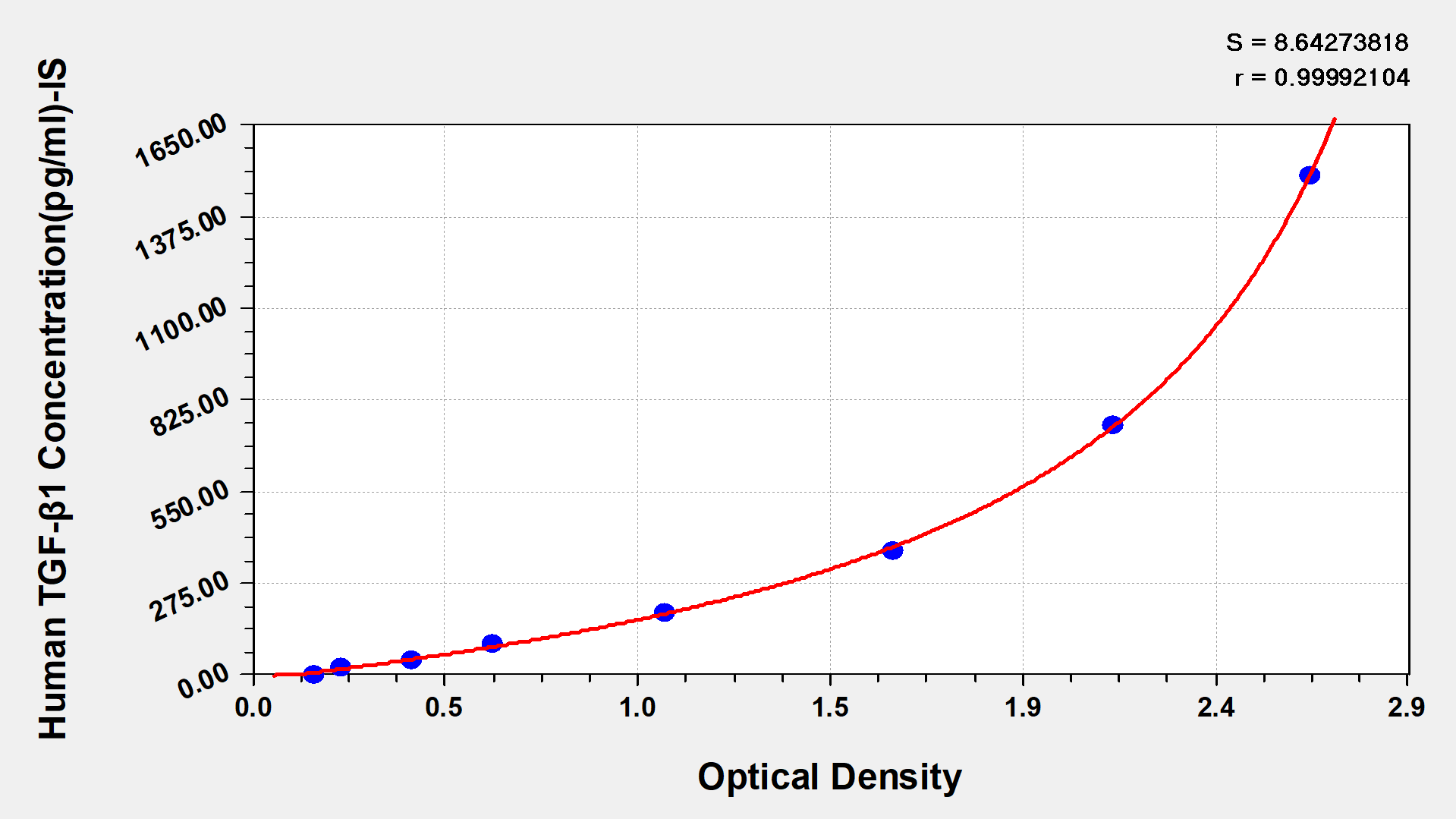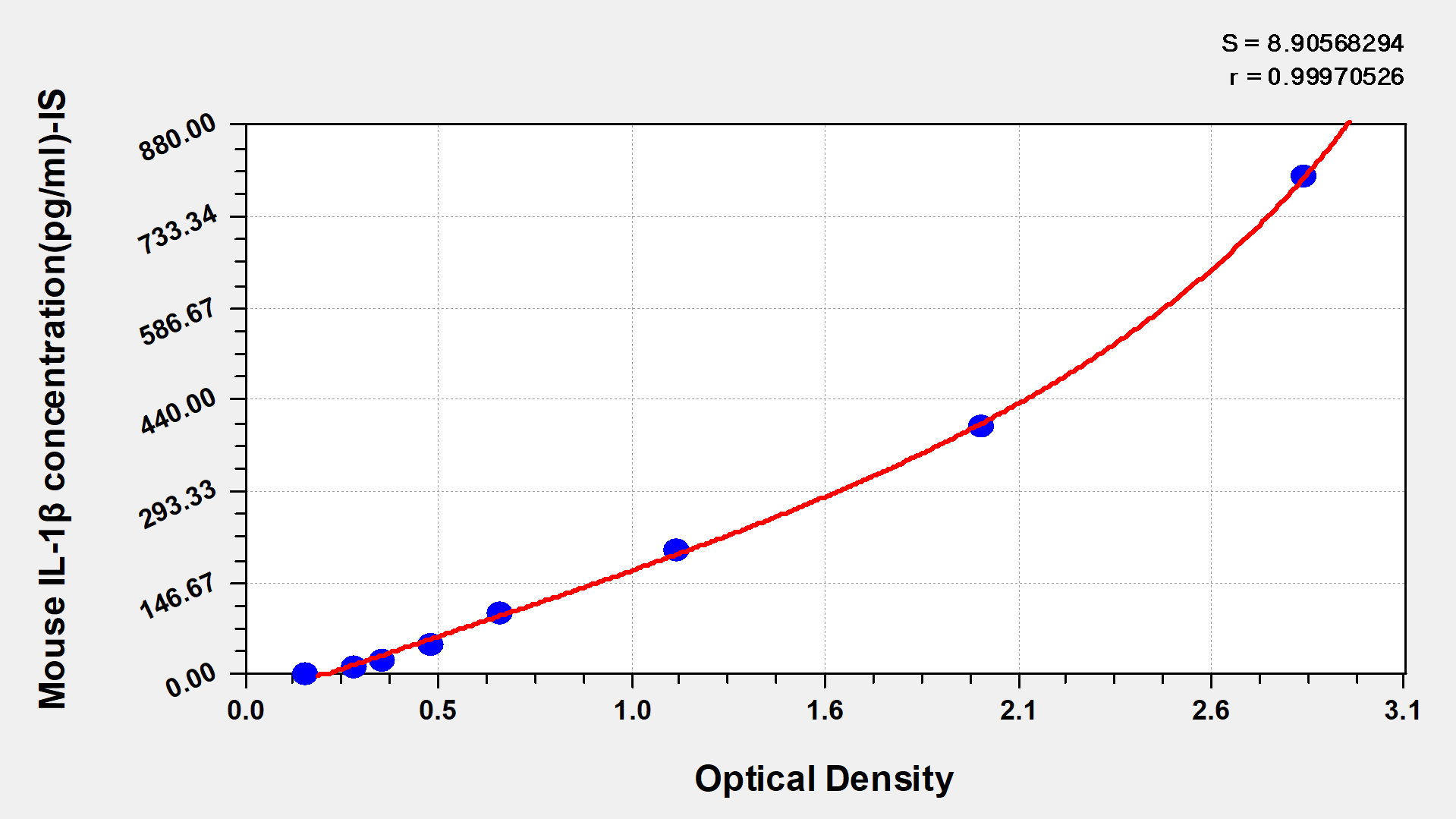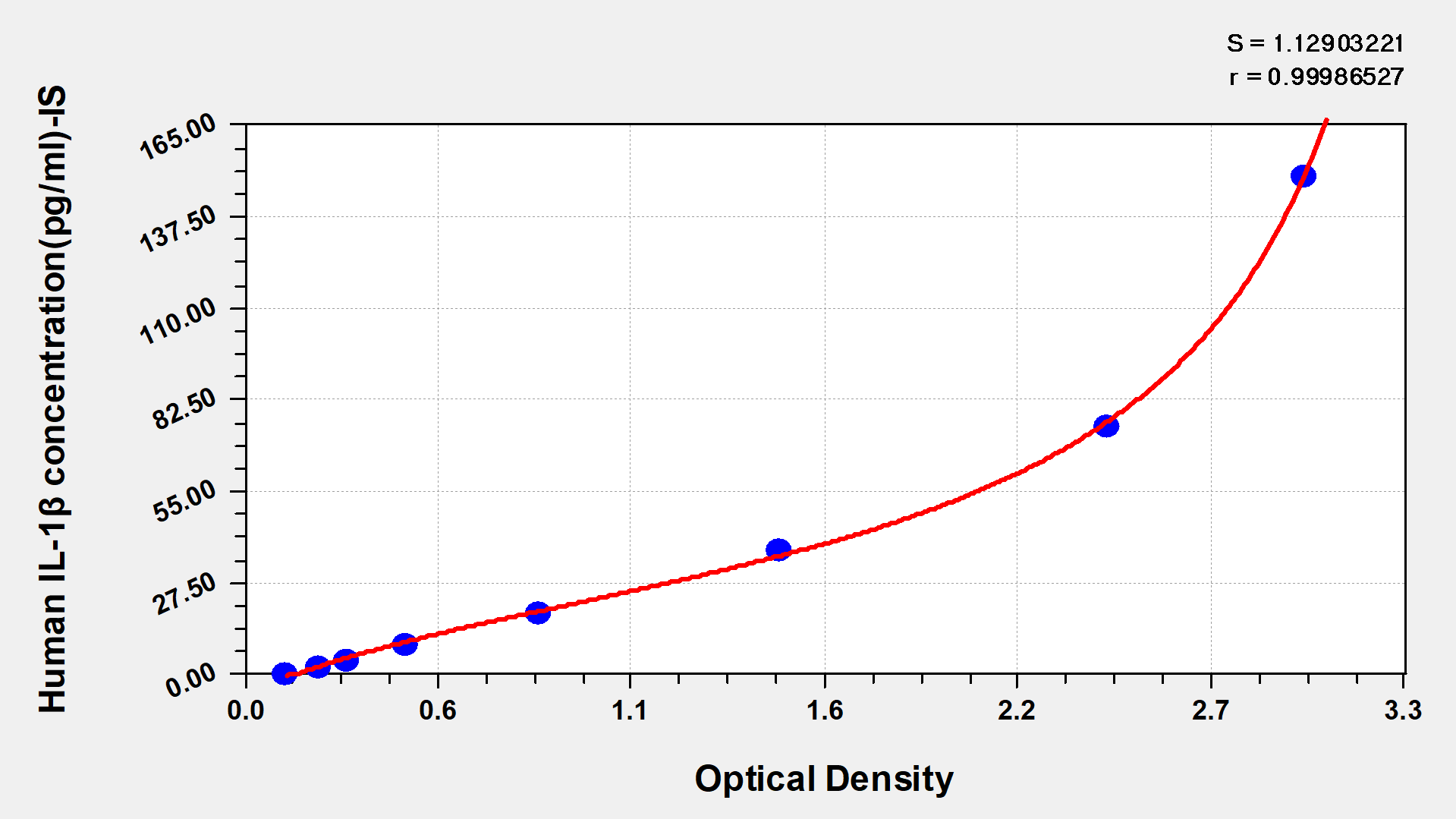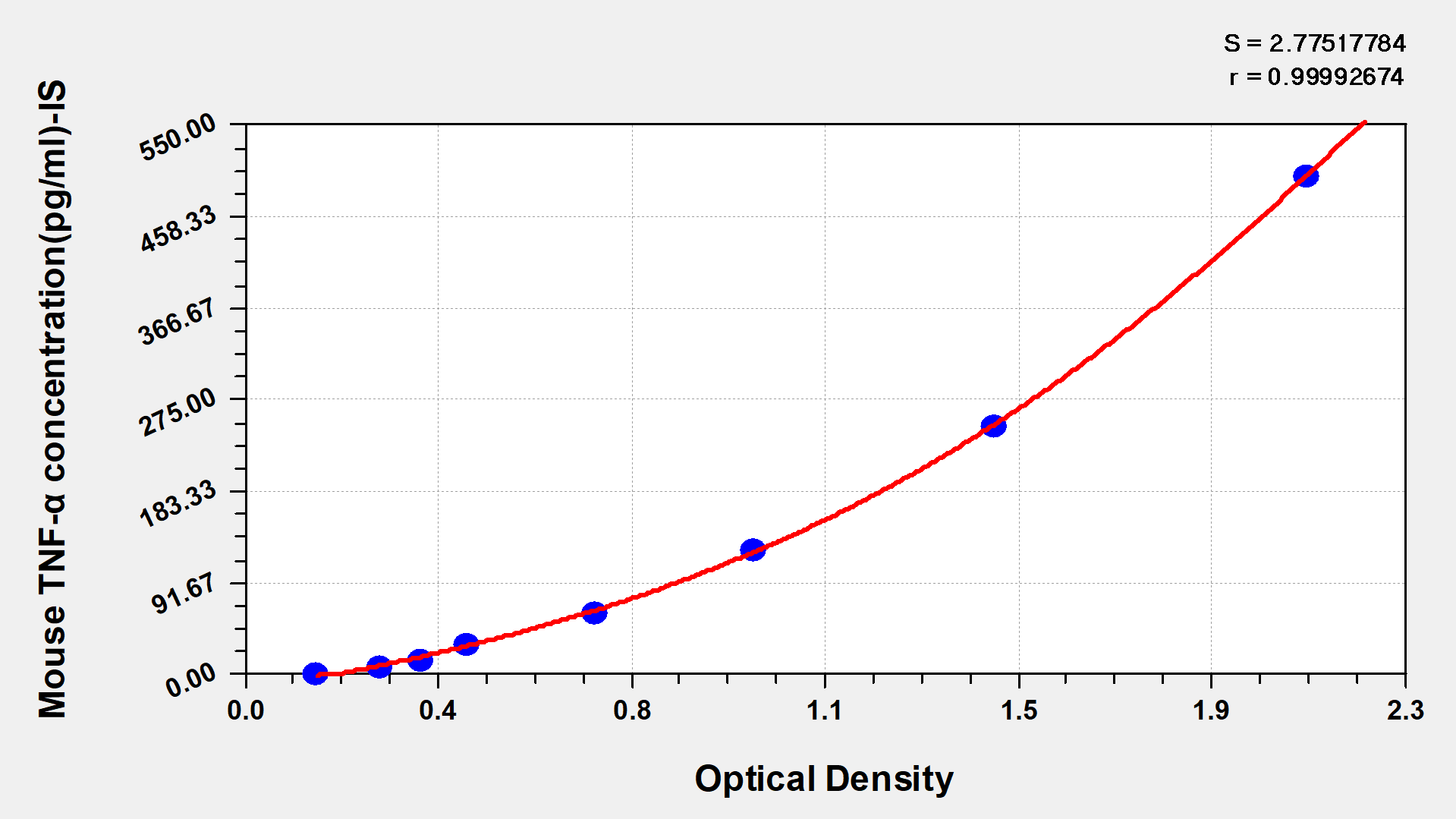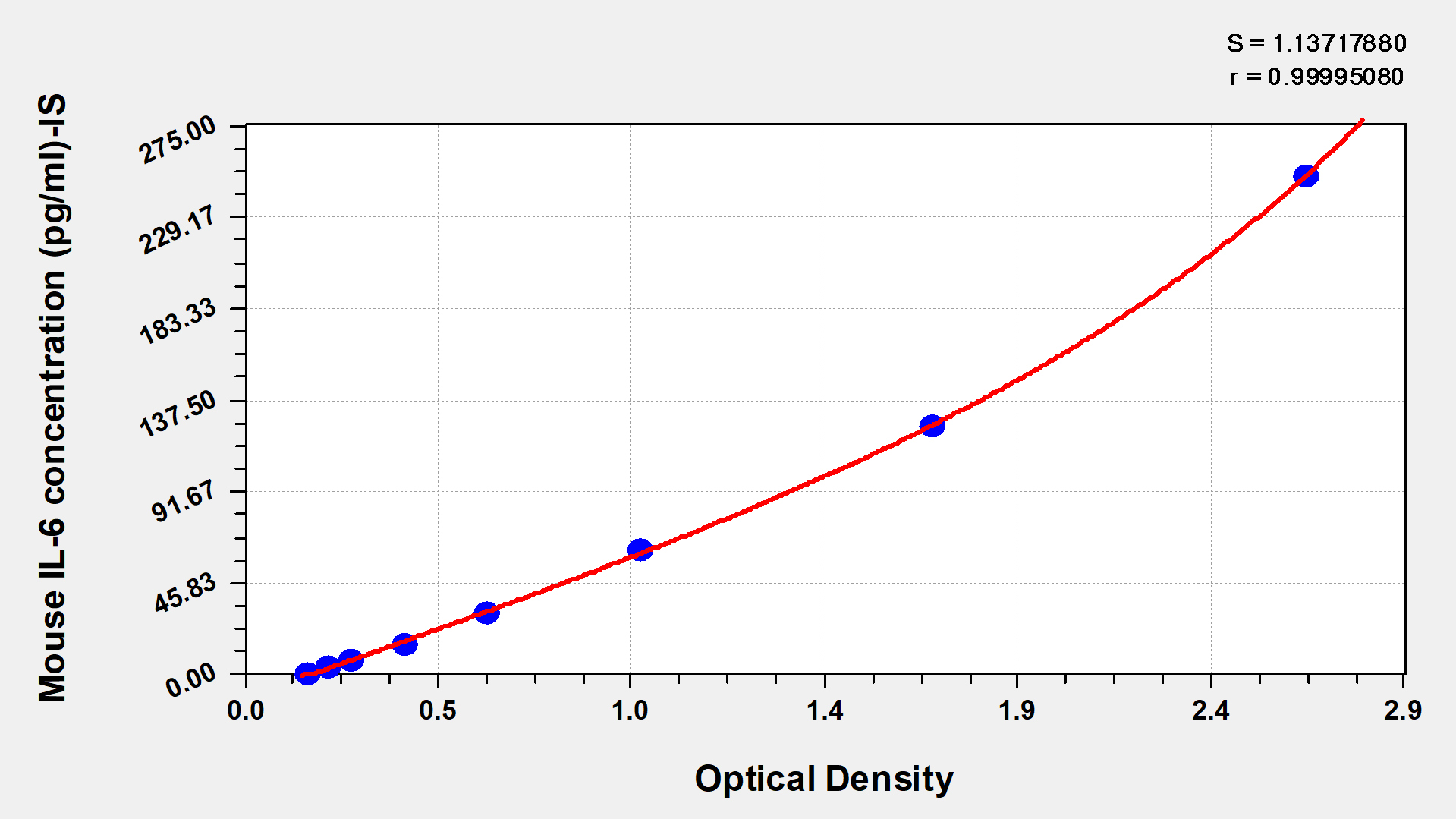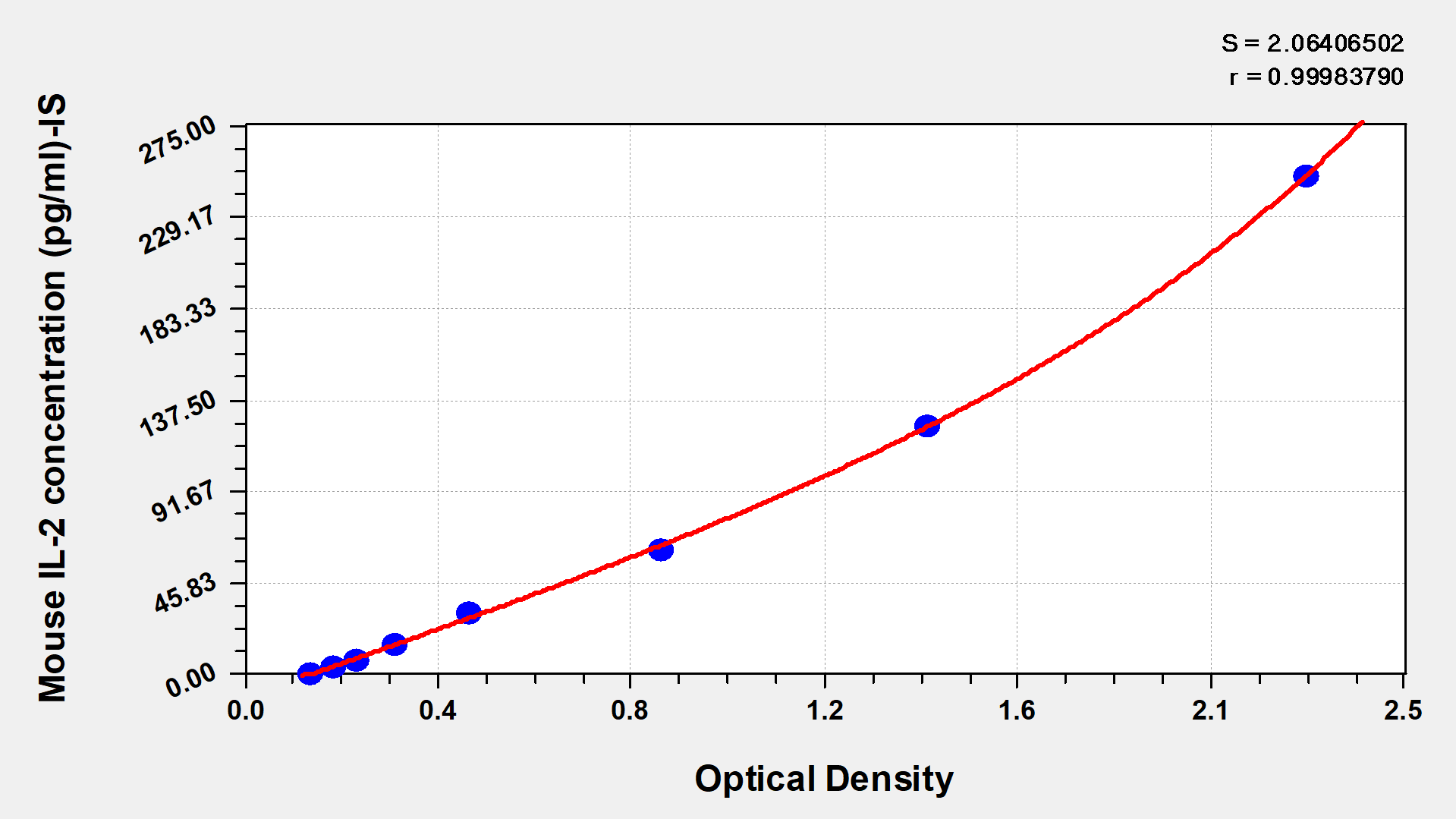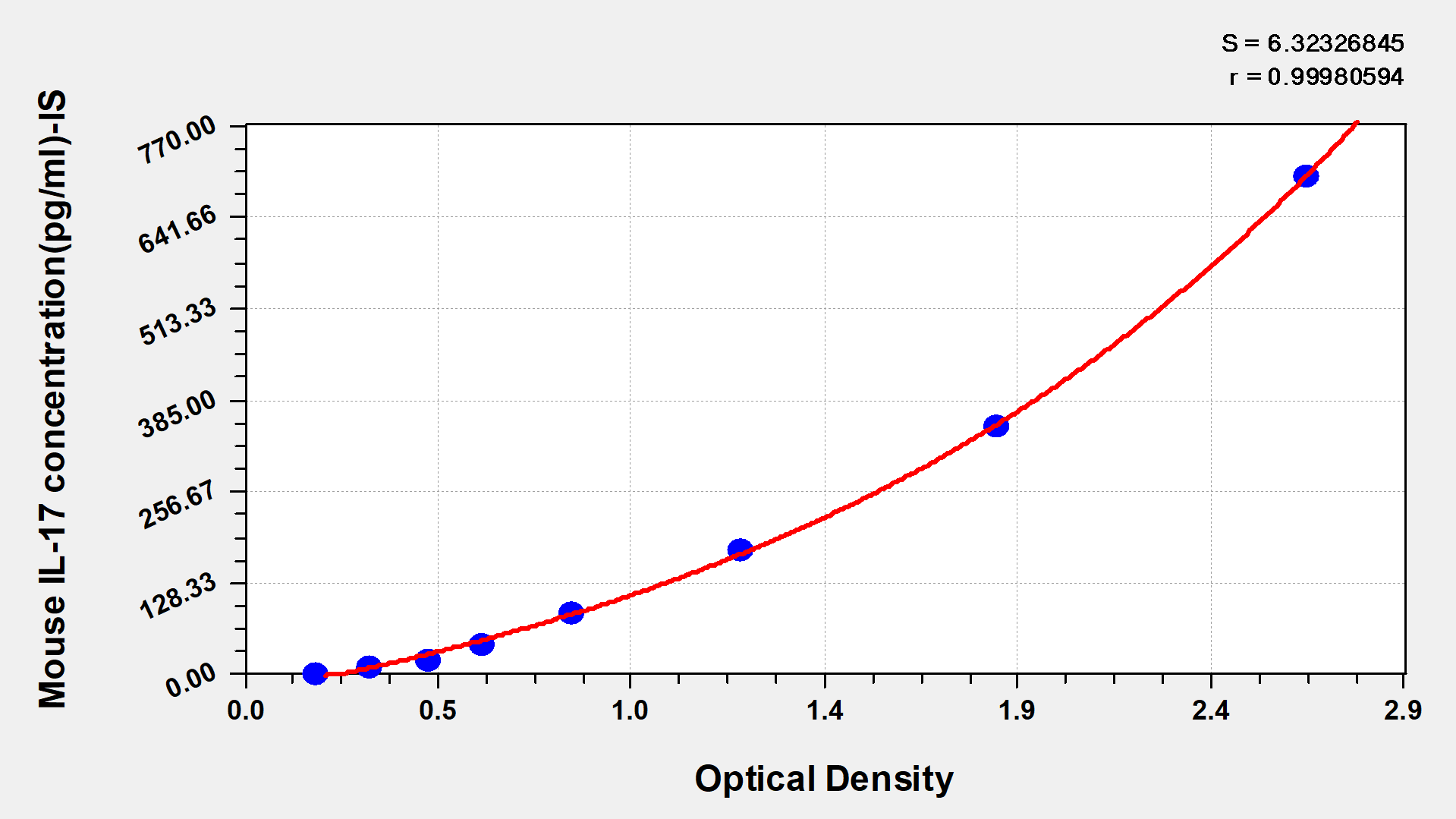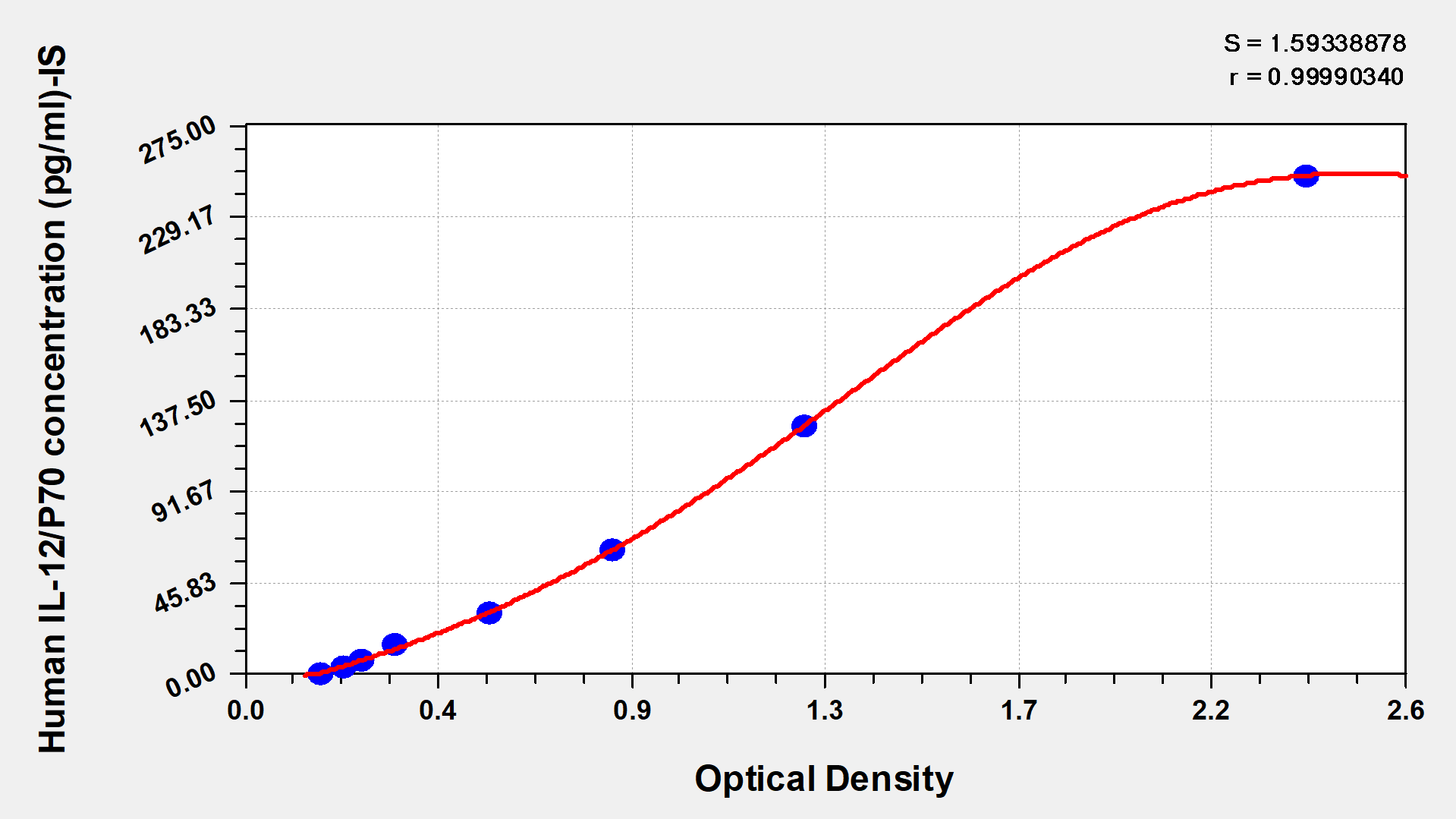Mouse Clusterin(CLU) ELISA kit
-
中文名稱:小鼠叢生蛋白(CLU)酶聯免疫試劑盒
-
貨號:CSB-EL005595MO
-
規格:96T/48T
-
價格:¥3600/¥2500
-
其他:
產品詳情
-
產品描述:小鼠叢生蛋白(CLU)酶聯免疫試劑盒(CSB-EL005595MO)為雙抗夾心法ELISA試劑盒,定量檢測血清、血漿、組織培養上清液、組織勻漿樣本中的CLU含量。CLU(Clusterin)是一種存在于多種細胞組分中的多功能蛋白,最早發現于山羊精液中,參與細胞間黏附。研究發現CLU與多種疾病相關,包括神經退行性疾病、免疫疾病、衰老和腫瘤等。CLU具有分泌型(sCLU)和核型(nCLU)兩種形式,分別發揮不同的生物學功能,如細胞黏附、細胞增殖、凋亡和信號傳導等。在腫瘤研究中,CLU被認為在腫瘤的發生發展中起重要作用,可能成為潛在的治療靶點。試劑盒檢測范圍為1.563 ng/mL-100 ng/mL,靈敏度為0.277 ng/mL。適用于小鼠疾病模型(如阿爾茨海默癥、腫瘤移植模型等)中CLU表達動態監測、藥物干預效果評估及分子機制研究,支持多種生物樣本類型的穩定檢測。本品僅用于科研,不用于臨床診斷,產品具體參數及操作步驟詳見產品說明書。
-
別名:Clu ELISA Kit; Apoj ELISA Kit; Msgp-2Clusterin ELISA Kit; Apolipoprotein J ELISA Kit; Apo-J ELISA Kit; Clustrin ELISA Kit; Sulfated glycoprotein 2 ELISA Kit; SGP-2) [Cleaved into: Clusterin beta chain; Clusterin alpha chain] ELISA Kit
-
縮寫:
-
Uniprot No.:
-
種屬:Mus musculus (Mouse)
-
樣本類型:serum, plasma, cell culture supernates, tissue homogenates
-
檢測范圍:1.563 ng/mL-100 ng/mL
-
靈敏度:0.277 ng/mL
-
反應時間:1-5h
-
樣本體積:50-100ul
-
檢測波長:450 nm
-
研究領域:Cardiovascular
-
測定原理:quantitative
-
測定方法:Sandwich
-
數據處理:
-
貨期:3-5 working days
靶點詳情
-
最新研究進展:LU,全稱為Clusterin,是一種高度保守的分泌糖蛋白,廣泛存在于多種細胞和組織中。最近的研究表明,CLU與多種生理和病理過程有關,如神經退行性疾病、腫瘤和心血管疾病。CLU通過多種途徑參與了這些疾病的發生和發展,包括抗凋亡、抗氧化、促進細胞增殖、細胞外基質降解等。此外,研究還發現CLU與老年認知障礙和阿爾茨海默病的發生密切相關。
-
功能:Functions as extracellular chaperone that prevents aggregation of non native proteins. Prevents stress-induced aggregation of blood plasma proteins. Inhibits formation of amyloid fibrils by APP, APOC2, B2M, CALCA, CSN3, SNCA and aggregation-prone LYZ variants (in vitro). Does not require ATP. Maintains partially unfolded proteins in a state appropriate for subsequent refolding by other chaperones, such as HSPA8/HSC70. Does not refold proteins by itself. Binding to cell surface receptors triggers internalization of the chaperone-client complex and subsequent lysosomal or proteasomal degradation. When secreted, protects cells against apoptosis and against cytolysis by complement. Intracellular forms interact with ubiquitin and SCF (SKP1-CUL1-F-box protein) E3 ubiquitin-protein ligase complexes and promote the ubiquitination and subsequent proteasomal degradation of target proteins. Promotes proteasomal degradation of COMMD1 and IKBKB. Modulates NF-kappa-B transcriptional activity. Following stress, promotes apoptosis. Inhibits apoptosis when associated with the mitochondrial membrane by interference with BAX-dependent release of cytochrome c into the cytoplasm. Plays a role in the regulation of cell proliferation. Following ER stress, suppresses stress-induced apoptosis by stabilizing mitochondrial membrane integrity through interaction with HSPA5. When secreted, does not affect caspase or BAX-mediated intrinsic apoptosis and TNF-induced NF-kappa-B-activity. When secreted, acts as an important modulator during neuronal differentiation through interaction with STMN3. Plays a role in the clearance of immune complexes that arise during cell injury.
-
基因功能參考文獻:
- Data identified sCLU as a regulator of mBMSCs lineage commitment to osteoblasts versus adipocytes through a mechanism mediated by ERK1/2 signaling. Inhibiting sCLU is a possible therapeutic approach for enhancing osteoblast differentiation and consequently bone formation. PMID: 29476977
- Results of quantitative real-time polymerase chain reaction analysis showed that Clu mRNA levels in the inner ear were increased during embryogenesis and were constantly expressed in the adult. PMID: 28687930
- Exposure of primary hippocampal neurons to Abeta42 induced an overexpression of intracellular clusterin, but the level of clusterin in supernatants did not change. Moreover, in APP/PSEN1 mice, there was a significant increase in intracellular clusterin in cortex and hippocampus, compared to age-matched wild-type (WT) mice, while serum clusterin level in APP/PSEN1 mice and in WT mice has no significant difference. PMID: 28558636
- These findings suggest that in the absence of CLU, Abeta clearance shifts to perivascular drainage pathways, resulting in fewer parenchymal plaques but more CAA because of loss of CLU chaperone activity, complicating the potential therapeutic targeting of CLU for AD. PMID: 28701379
- Sustained expression of clusterin in liver functioned as a preconditioning stimulus and prevented methionine and choline deficient (MCD) diet-induced severe steatohepatitis injury via Nrf2 activation. PMID: 29229391
- Clusterin deficiency worsens renal inflammation and tissue fibrosis after ischemia-reperfusion injury in the kidney. PMID: 27649757
- The results identify Clusterin as a new molecular partner involved in apoptotic cell efferocytosis and suggest a protective role for Clusterin in inflammation and autoimmune diseases. PMID: 27148688
- Both CLU and PLXNA4 have been genetically associated with Alzheimer disease (AD) risk and our data thus provide a direct relationship between two AD risk genes. Our data suggest that increasing the levels of PLXNA4 or targeting CLU-PLXNA4 interactions may have therapeutic value in AD. PMID: 27378688
- clusterin-induced TNF-alpha and MMP-9 up-regulation is most likely mediated via TLR4 recruitment into lipid rafts; clusterin has a role as an endogenous regulator for TLR4 signaling PMID: 27965092
- susceptibility to experimental pancreatitis is determined by strain and model differences with Clusterin and Pycr1 alterations PMID: 27939882
- the antioxidant property of clusterin is suggested to regulate the expression of CCL20 in bronchial epithelial cells and the subsequent recruitment of inflammatory dendritic cells in the airway. PMID: 26826245
- these data suggest that activation of prosurvival autophagy by hypoxia in kidney cells requires CLU expression and may be a key cytoprotective mechanism of CLU in the protection of the kidney from hypoxia/ischemia-mediated injury. PMID: 26561650
- Taken together, our results suggest that an NCE-box within the clusterin promoter is necessary for insulin-stimulated hepatic expression of clusterin via SREBP-1c. PMID: 26282207
- Overexpression of clusterin in proximal tubular epithelial cells decreased the levels of Ang II-stimulated fibrotic markers and AT1R. PMID: 25148511
- Clusterin facilitates stress-induced lipidation of LC3 and autophagosome biogenesis to enhance cancer cell survival. PMID: 25503391
- Results suggest that regulation of clusterin expression by the lymphotoxin beta signaling pathway and its protein dynamics during immune response suggest a specific role of in the immune system. PMID: 24865838
- we have identified hypothalamic clusterin as a novel anorexigenic molecule that can potentiate central leptin activity. PMID: 24825475
- This study provides the first evidence that sCLU reduces OC formation by inhibiting the actions of M-CSF, thereby suggesting its protective role in bone erosion. PMID: 24866235
- results suggest that clusterin plays a protective role against high-fat diet-induced insulin resistance through the suppression of oxidative stress and inflammation. PMID: 24684302
- These results showed that clusterin expression is modulated dynamically during development and by sensory activity. PMID: 23831077
- Suggest Clu is required for renal tissue regeneration in the kidney repair phase after ischemia-reperfusion injury, which is associated with promotion of tubular cell proliferation. PMID: 24477687
- Clusterin induces the chemotactic directional migration of J774A.1 macrophages. PMID: 24569077
- no difference in the circulating levels of Clusterin in late-stage prion disease when animals will show behavioral decline, accumulation of misfolded protein, and dramatic synaptic and neuronal loss. PMID: 24366862
- Clusterin is a ligand for apolipoprotein E receptor 2 (ApoER2) and very low density lipoprotein receptor (VLDLR) and signals via the Reelin-signaling pathway. PMID: 24381170
- Clusterin level was slightly increased in lumbar spinal cord of SOD1G93A transgenic mice, but only during the period of neuronal death, reactive gliosis, and overt symptomatology, and clusterin was a constituent of mutant SOD1 inclusions. PMID: 23595219
- These studies suggest unique roles for SC-derived OPN and CLU in regeneration of peripheral motor and sensory axons. PMID: 24478351
- The hypothalamic clusterin-low-density lipoprotein receptor-related protein-2 axis is a novel anorexigenic signalling pathway. PMID: 23673647
- CLU protects hepatocellular carcinoma cells from endoplasmic reticulum stress induced apoptosis at least partially through interacting with GRP78. PMID: 23457489
- Nuclear clusterin signals cell death via an interaction with Bcl-xL in the hippocampus after seizures. PMID: 22197644
- these findings describe a novel function for clusterin as an inducer of TNF-alpha in macrophages and their chemotactic migration, and suggest that clusterin has a tumor-promoting effect. PMID: 22575505
- attenuates renal fibrosis in obstructive nephropathy PMID: 22052058
- Loss of clusterin limits atherosclerosis in apolipoprotein E-deficient mice via reduced expression of Egr-1 and TNF-alpha. PMID: 21099169
- Data suggest that clusterin plays a critical role to promote both exocrine and endocrine regeneration following pancreas injury, as well as for in vitro beta-cell regeneration. PMID: 21290478
- these results suggest that clusterin expression is increased by glucose stimulation, and SREBP-1c plays a crucial role in the metabolic regulation of clusterin. PMID: 21549685
- the Rarb region of Mmu14 and Stmn2, but not Cr1 or Clu or Picalm have roles in prion disease PMID: 21151910
- The chaperone clusterin mediates systemic clearance of extracellular misfolded proteins PMID: 21505792
- Clusterin has a chaperone action like that of the small heat shock proteins PMID: 10694874
- The chaperone action of clusterin is ATP-independent PMID: 11123922
- The extracellular chaperone clusterin appears in the cytosol during endoplasmic reticulum stress PMID: 17451556
- The chaperone action of clusterin is important in quality control of extracellular protein folding PMID: 19878774
- Clusterin is an extracellular holdase-type chaperone PMID: 10066740
- Cellular RNA released from necrotic cells can act as an endogenous TLR3 ligand to induce clusterin expression in vitro in vascular smooth muscle cells and in vivo. PMID: 20692254
- Reduction of inducible expression of clusterin results in an increase in tubular cell apoptosis and renders mice prone to ischemia reperfusion injury, implying a protective role of clusterin in kidney injury. PMID: 20007348
- Clusterin is acting in a dual role in that cells can be protected from apoptosis and dead cells can be more easily removed PMID: 11906924
- clusterin promotes amyloid plaque formation and is critical for neuritic toxicity in a mouse model of Alzheimer's disease PMID: 12145324
- over expression of this protein is responsible for the anti-apoptosis effect in a mouse neuroblastoma cell line, B103. PMID: 12622243
- apolipoprotein J has a role in inhibiting NF-kappaB signaling through stabilization of IkappaBs; this activity may result in suppression of tumor cell motility PMID: 12882985
- additive effects of apoE and clusterin on influencing amyloid-beta deposition PMID: 14741101
- Our findings show increased clusterin expression in the aged S100B mice compared to their CD-1 controls, a finding we have interpreted as further evidence of pathological brain aging. PMID: 15126113
- Clusterin alters the extracellular deposition of prion protein (PrP) associated with bovine spongiform encephalopathy (BSE) and accelerates BSE pathogenesis in the mouse model. PMID: 15257138
顯示更多
收起更多
-
亞細胞定位:Secreted. Nucleus. Cytoplasm. Mitochondrion membrane; Peripheral membrane protein; Cytoplasmic side. Cytoplasm, cytosol. Microsome. Endoplasmic reticulum. Mitochondrion. Mitochondrion membrane. Cytoplasm, perinuclear region. Cytoplasmic vesicle, secretory vesicle, chromaffin granule.
-
蛋白家族:Clusterin family
-
組織特異性:Most abundant in stomach, liver, brain, and testis, with intermediate levels in heart, ovary and kidney.
-
數據庫鏈接:
Most popular with customers
-
Human Transforming Growth factor β1,TGF-β1 ELISA kit
Detect Range: 23.5 pg/ml-1500 pg/ml
Sensitivity: 5.8 pg/ml
-
-
-
Mouse Tumor necrosis factor α,TNF-α ELISA Kit
Detect Range: 7.8 pg/ml-500 pg/ml
Sensitivity: 1.95 pg/ml
-
-
-
-



